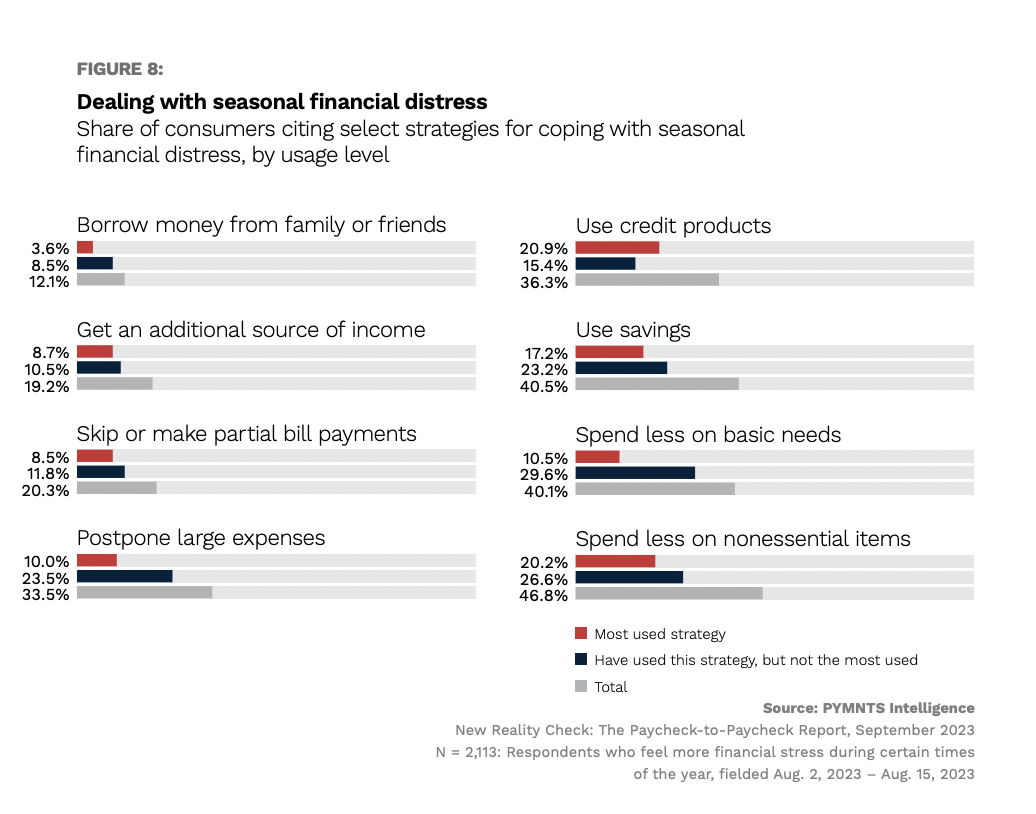
When consumers’ budgets are pressured, they may cut back, but restaurants benefit from spenders’ strong desire to find other ways to afford the small luxuries they want.
“The Seasonal Financial Distress Deep Dive Edition,” the latest installment of “The Paycheck-to-Paycheck Report,” a PYMNTS and LendingClub collaboration, drew from a survey of more than 4,200 U.S. consumers in August about the impact of seasonal spending on consumers’ ability to manage expenses and put aside savings.
The results reveal that, to cope with seasonal financial distress, a plurality of consumers’ go-to strategy is not to cut back on nonessentials but rather to tap credit products, with 21% of those surveyed reporting that this is their top strategy, versus a slightly lower 20% saying that spending less on nonessential items is their most used strategy.

Indeed, restaurants are seeing consumers find ways to make room in their budgets for their food.
Take Restaurant Brands International (RBI), parent company of Burger King, Tim Hortons, Popeyes and Firehouse Subs. The company shared on an earnings call this past spring that it is not concerned about price increases affecting consumers’ quick-service restaurant (QSR) spending.
“In quick-service restaurants, we provide convenient and affordable food every day, and I think overall, from a big picture perspective, we’re in a good spot regardless of the macro environment that we’re in,” CEO Josh Kobza stated.
He observed that the biggest driver of spending is employment, and as long as consumers have “money in their pockets,” he stated, they continue to eat out.
It is not just QSRs. On an earnings call earlier this year, Darden Restaurants, parent company of casual dining chains Olive Garden and LongHorn Steakhouse and some fine dining brands, noted that consumers are continuing to dine out amid budgetary pressures.
“There is a tension between what people want and what they can afford,” Darden CEO Rick Cardenas said. “Consumers continue to seek value, which is not about low prices. Consumers are making spending trade-offs, and food away from home is one of the most difficult expenses to give up because going out to a restaurant is still an affordable luxury for them.”